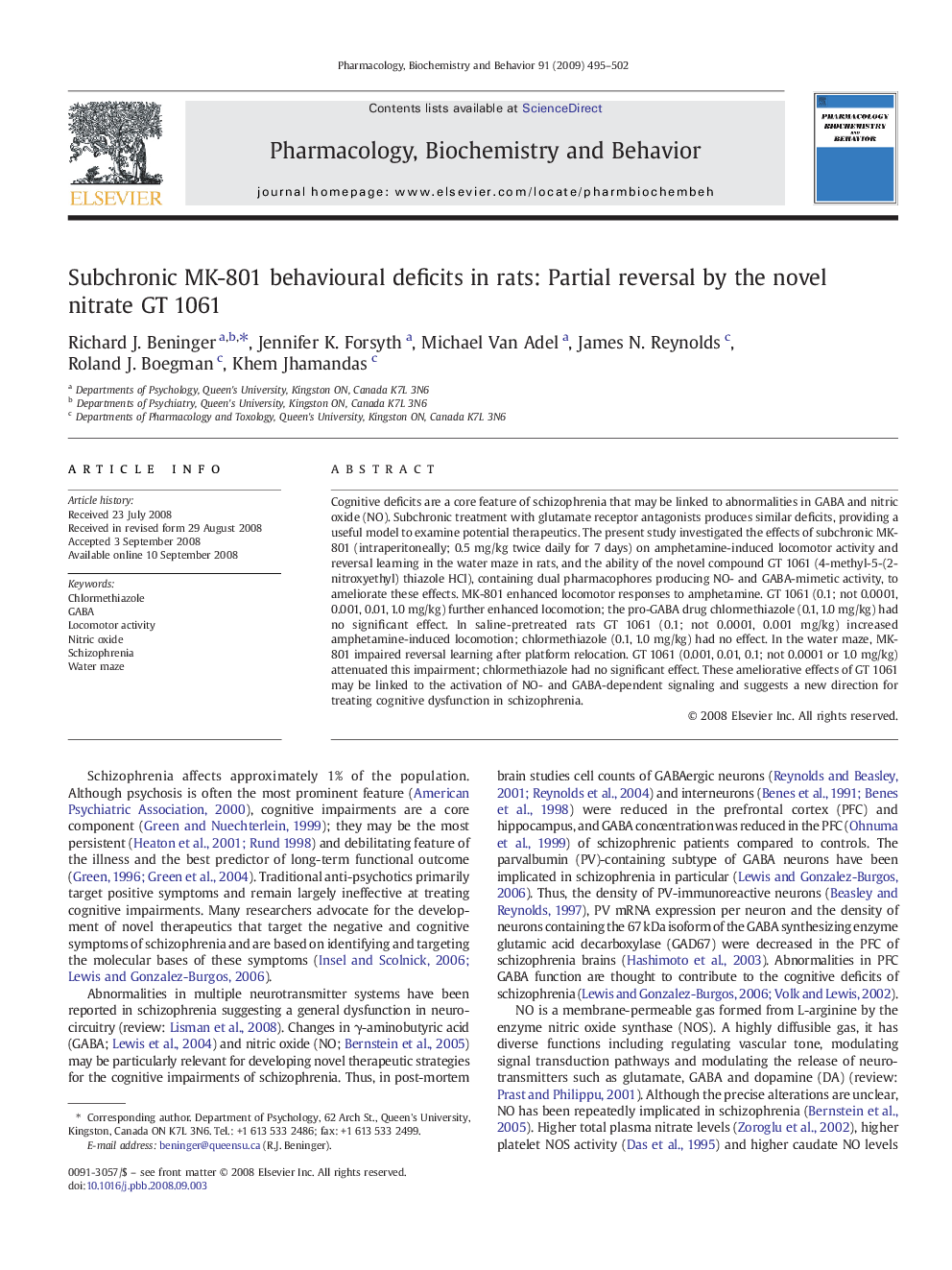| Article ID | Journal | Published Year | Pages | File Type |
|---|---|---|---|---|
| 2014020 | Pharmacology Biochemistry and Behavior | 2009 | 8 Pages |
Abstract
Cognitive deficits are a core feature of schizophrenia that may be linked to abnormalities in GABA and nitric oxide (NO). Subchronic treatment with glutamate receptor antagonists produces similar deficits, providing a useful model to examine potential therapeutics. The present study investigated the effects of subchronic MK-801 (intraperitoneally; 0.5Â mg/kg twice daily for 7Â days) on amphetamine-induced locomotor activity and reversal learning in the water maze in rats, and the ability of the novel compound GT 1061 (4-methyl-5-(2-nitroxyethyl) thiazole HCl), containing dual pharmacophores producing NO- and GABA-mimetic activity, to ameliorate these effects. MK-801 enhanced locomotor responses to amphetamine. GT 1061 (0.1; not 0.0001, 0.001, 0.01, 1.0Â mg/kg) further enhanced locomotion; the pro-GABA drug chlormethiazole (0.1, 1.0Â mg/kg) had no significant effect. In saline-pretreated rats GT 1061 (0.1; not 0.0001, 0.001Â mg/kg) increased amphetamine-induced locomotion; chlormethiazole (0.1, 1.0Â mg/kg) had no effect. In the water maze, MK-801 impaired reversal learning after platform relocation. GT 1061 (0.001, 0.01, 0.1; not 0.0001 or 1.0Â mg/kg) attenuated this impairment; chlormethiazole had no significant effect. These ameliorative effects of GT 1061 may be linked to the activation of NO- and GABA-dependent signaling and suggests a new direction for treating cognitive dysfunction in schizophrenia.
Related Topics
Life Sciences
Biochemistry, Genetics and Molecular Biology
Biochemistry
Authors
Richard J. Beninger, Jennifer K. Forsyth, Michael Van Adel, James N. Reynolds, Roland J. Boegman, Khem Jhamandas,
